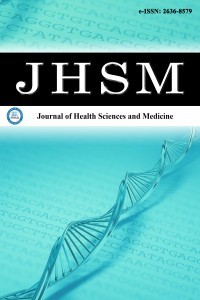1.
https://www.globalmediainsight.com/blog/youtube-users-statistics/#:~:text=Monthly%20Active%20Users%20on%20YouTube, Monthly%20active%20users&text=YouTube%20has%20more%20than%202.6,world%20have%20access%20to%20YouTube
2.
Kunze KN, Krivicich LM, Verma NN, et al. Quality of online video resources concerning patient education for the meniscus: a YouTube-based quality-control study. <em>J Arthroscop Related Surg.</em> 2020;36(1):p.233-238. doi:10.1016/j.arthro.2019.07.033
3.
Kiel J, Kaiser K. Tarsal tunnel syndrome. Treasure Island (FL): StatPearls Publishing; 2024 Jan.
4.
Hong CH, Lee HS, Lee WS, et al. Tarsal tunnel syndrome caused by posterior facet talocalcaneal coalition: a case report. <em>Medicine.</em> 2020;99(26):e20893. doi:10.1097/MD.0000000000020893
5.
Khedr EM, Fawi G, Abbas MAA, et al. Prevalence of common types of compression neuropathies in Qena Governorate/Egypt: a population-based survey. <em>Neuroepidemiology.</em> 2016;46(4):253-260. doi:10.1159/000444641
6.
de Souza Reis Soares O, Duarte ML, Brasseur JL. Tarsal tunnel syndrome: an ultrasound pictorial review. <em>J Ultrasound Med.</em> 2022;41(5):p.1247-1272. doi:10.1002/jum.15793
7.
Hong CH, Lee YK, Won SH, et al. Tarsal tunnel syndrome caused by an uncommon ossicle of the talus: a case report. <em>Medicine.</em> 2018;97(25):e11008. doi:10.1097/MD.0000000000011008
8.
Samarawickrama D, Therimadasamy AK, Chan YC, et al. Nerve ultrasound in electrophysiologically verified tarsal tunnel syndrome. <em>Muscle Nerve.</em> 2016;53(6):p.906-912. https://doi.org/ 10.1002/mus.24963. doi:10.1002/mus.24963
9.
Silberg WM, Lundberg GD, Musacchio RA. Assessing, controlling, and assuring the quality of medical information on the internet: caveant lector et viewor-let the reader and viewer beware. <em>Jama.</em> 1997;277(15):p.1244-1245.
10.
Erdem MN, Karaca S. Evaluating the accuracy and quality of the information in kyphosis videos shared on YouTube. <em>Spine.</em> 2018; 43(22):p.E1334-E1339. doi:10.1097/BRS. 0000000000002691
11.
Charnock D, Shepperd S, Needham G, et al. DISCERN: an instrument for judging the quality of written consumer health information on treatment choices. <em>J Epidemiol Community Health.</em> 1999;53(2):p.105-111. doi:10.1136/jech.53.2.105
12.
Mert A, Bozgeyik B. Quality and content analysis of carpal tunnel videos on YouTube. <em>Indian J Orthop.</em> 2022;56(1):p.73-78. doi:10.1007/s43465-021-00430-5
13.
Lama CJ, Hartnett DA, Donnelly JC, et al. YouTube as a source of patient information for cubital tunnel syndrome: an analysis of video reliability, quality, and content. <em>HAND.</em> 2023;15589447231151428. doi:10.1177/15589447231151428
14.
Özdemir O, Diren F, Boyalı O, et al. Metric evaluation of reliability and transparency of the videos about carpal tunnel syndrome surgery in the online platforms: assessment of YouTube videos’ content. <em>Neurospine.</em> 2021;18(2):p.363. doi:10. 14245/ns.2142030.015
15.
Sampson M, Cumber J, Li C, et al. A systematic review of methods for studying consumer health YouTube videos, with implications for systematic reviews. <em>Peer J.</em> 2013;1:e147. doi:10.7717/peerj.147
16.
Singh AG, Singh S, Singh PP. YouTube for information on rheumatoid arthritis-a wake-up call? <em>J Rheumatol.</em> 2012;39(5): p.899-903.
17.
Goyal R, Mercado AE, Ring D, et al. Most YouTube videos about carpal tunnel syndrome have the potential to reinforce misconceptions. <em>Clinic Orthop Related Res.</em> 2021;479(10):2296-2302. doi:10.1097/CORR.0000000000001773
18.
Underhill C, McKeown L. Getting a second opinion: health information and the Internet. <em>Health Rep.</em> 2008;19(1):p.65-69.

